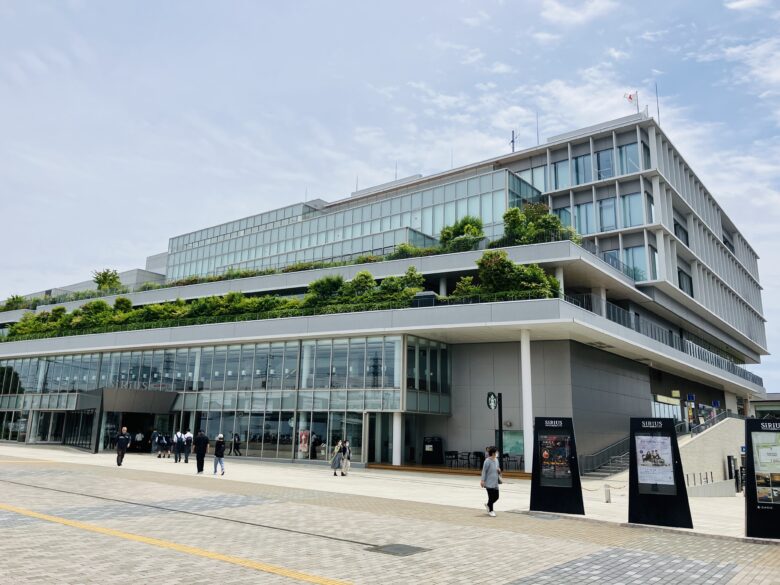<調査内容>
【名称】
大和市文化創造拠点「シリウス」(神奈川県大和市)
【施設概要】
神奈川県大和市が2016年11月に開設した施設「シリウス」は、図書館、芸術文化ホール、生涯学習センター、屋内こども広場などが融合した複合施設です。この施設は、指定管理者制度を導入して運営されており、多機能でありながら、統一された管理体制を実現しています。
【市町村や背景について】
大和市は、鉄道の利便性が高く、市内には私鉄3社が乗り入れており、8駅があります。主要道路としては国道467号線が通っており、交通アクセスが非常に良いです。市面積は27㎢で、人口は約24.3万人。人口が増加しており、特に20代の人口増加が著しいです。しかし、独居世帯も1,700世帯存在し、これらの人々が定期的に訪れやすい施設の必要性が高まっていました。
43年前、渋滞緩和のために相模鉄道の大和駅(現在のプロムナード)の1km区間が地下化され、道路が作られました。それに続いて、大和駅の東側第4地区の再開発が1990年から進められていました。しかし、バブル崩壊後とリーマンショックにより開発計画は停滞し、更地となっていた1.2haの土地を大和市が取得しました。この土地に老朽化していた図書館や生涯学習センターなどを集約し、文化創造拠点「シリウス」を建設することにしました。
【施設の特徴】
シリウスは、施設全体を一つの図書館空間とみなし、誰もが居場所を見つけられるように工夫された運営が特徴です。大和市長は「全館まるごと図書館」と発言しており、6階建ての建物には図書館のほかにも、芸術文化ホール、公民館、屋内こども広場、スターバックスコーヒーなどが入っています。
シリウスの運営は、市が選定した指定管理者「やまとみらい」が担っています。この企業グループは、図書館流通センター、サントリーパブリシティサービス、小学館集英社プロダクション、明日香、ボーネルンド、横浜ビルシステムの6社で構成されており、それぞれが図書館、芸術文化ホール、生涯学習センター、屋内こども広場(げんきっこ広場、ちびっこ広場、保育士が常駐する保育室、育児相談室など)の運営、ビルの維持管理を専門としています。
1階エントランスと連続した空間に入居するスターバックスは、指定管理者やまとみらいが選定し、市と協議のうえ誘致を決定しました。スターバックスは市からスペースを借りて営業しています。さらに、シリウスとは別に外から出入りできる1、2階のスペースには、飲食店舗やコンビニエンスストア、歯科、以前からあった神社などが入居しており、施設内で共存しています。
シリウスの魅力は、誰もが気軽に利用できる点にあります。利用者は公共施設にありがちな細かなルールに縛られることなく、館内での飲み物、おしゃべり、写真撮影が一部エリアを除き許可されています。この運営方針は、利用者にとって居心地の良い空間を提供するため、利用者の視点からルールを再考するという理念に基づいています。
シリウスは地上6階、地下1階建ての建物で、敷地面積9,378.19㎡、延床面積26,003.33㎡を誇ります。市が建物の約95%を使用し、残りのスペースを神社や商業施設が使用しています。図書館の図書には全てICタグが付けられており、利用カード作成も自動化されています。各階にはそれぞれ特徴があり、指定管理団体の構成団体が得意分野を活かして運営を行っています。
【運営と予算】
シリウスの運営には、市の2部局3課が関わっており、連絡調整会議が頻繁に開催されています。月に8回の館長会議や連絡調整会議、さらに4回の小委員会が開かれています。指定管理団体内と行政の連絡調整はこまめに行なっているものの、予算130万円以下の事案は指定管理団体が担う取り決めになっており、事案によっては予算額の調整を要することから担当が決まりにくいという問題があります。
シリウスの基本計画は平成22年から23年にかけて策定され、再開発組合に委託して建設が進められました。総工事費162億円のうち、市が147億円を負担しました。設計は佐藤総合設計が担当し、運営予算の90%は指定管理料として市から支払われています。
シリウスは1日に約8,000人が利用し、年間で約285万人の利用者が訪れます。平成28年の開館以来、利用者数はほぼ変わらず安定していますが、数年経過後に微減し始めたため、指定管理団体はスタッフの研修内容を見直しました。これにより、利用者へのサービス意識を高めるため、クレドを作成し、職員全員が共有しています。一部の社では毎朝の唱和も行っています。
シリウスは、その多機能性と柔軟な運営方針により、地域住民だけでなく、多くの来館者に支持されています。これからも多様なニーズに応える施設として発展していくことが期待されます。
<所感>
大和市文化創造拠点シリウスは、民間による運営の良い点が集約された施設だと感じました。良い施設とは、単に予算をかけて機能性の高い設備を作ることではなく、ソフト面を充実させ、飽きられないように工夫し続けること、そして利用者の声を拾い上げ、常にアップデートを続けることが重要だということを学びました。ランニングコストが高いものの、嘱託職員の割合を増やすなどして人件費を抑える工夫がされています。シリウスでは、誰もが居場所を見つけて気軽に利用できるように、公共施設にありがちな細かなルールで利用者を縛らない運営がされています。同様の運営は、行政による直営では難しいでしょう。
開館から8年が経過していますが、施設内の使用頻度の高い場所も低い場所も同様に清潔に保たれています。これは、指定管理団体6社の中にビル管理を行う会社が含まれており、指定管理団体と市との頻繁な調整会議が細かな汚れの報告や清掃方法の改善に寄与しているからです。また、清掃担当者に限らず、気づいた職員がゴミなどを片付ける行動を徹底していることも大きな要因です。施設で働く全ての職員が「お客様(市民)」のためという意識を持っていることが感じられます。通常の施設では、清掃業務を外部業者に委託している場合、使用頻度の高い床が徐々に黒ずんでいくことがありますが、シリウスではそのようなことは見られません。また、市民の要望を投稿できるポストが設置され、これまで多くの意見が反映されています。これも行政による直営では予算の関係で実現が難しいでしょう。
視察対応に応じてくださった「やまとみらい」の統括責任者の方は、複数の民間企業グループによる運営のデメリットについてほとんど感じないとおっしゃっていました。指定管理団体の6社と行政の間では、運営を円滑に行うために毎月多くの会議を行っていますが、それは全て利用者(市民)のためであり、当然のこととして捉えられています。このようなプロ意識の高さに感銘を受けました。
今回の視察を通じて、指定管理団体に民間企業グループが選ばれることの強みやメリットを強く感じました。これにより、多様な視点や専門知識が融合し、利用者にとって最適な運営が実現されているのだと思います。行政が作った公社や財団法人ではなく、民間企業グループが運営を担うことで、柔軟で迅速な対応が可能になっている点が非常に印象的でした。
神奈川県大和市 基礎情報
人口 24万人(推計人口2024年4月1日)
面積 27平方キロメートル
市議会 定数28名
令和6年度予算 (一般会計 871億8,000万円)
秋田市
人口 30万人
面積 906平方キロメートル
市議会 定数36名
令和5年度予算総額 2,502億5,861万円
(一般会計 1,410億7千万円)
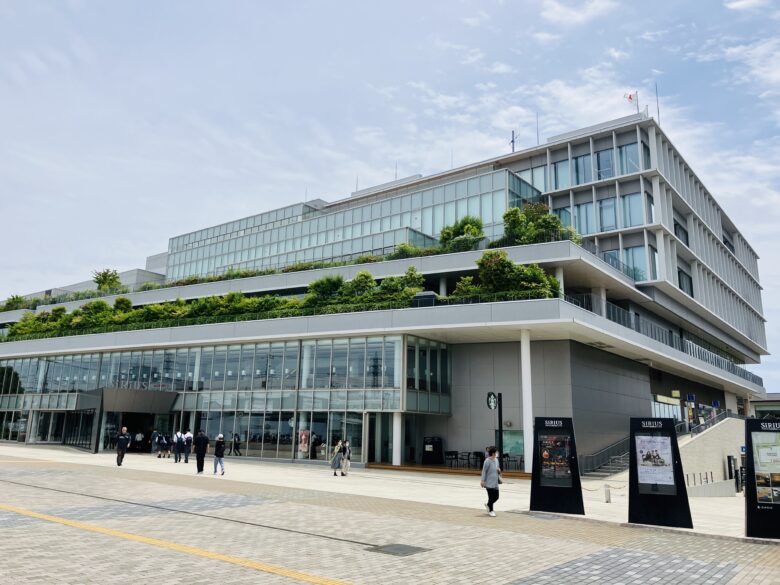

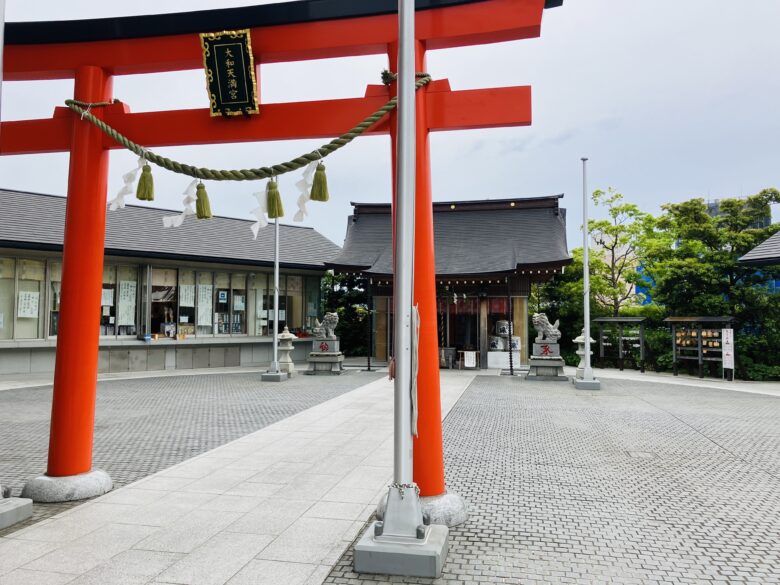


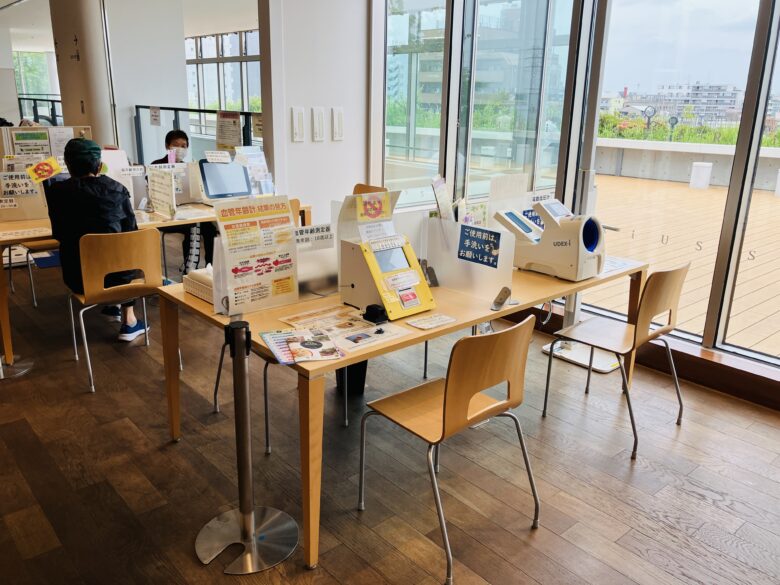




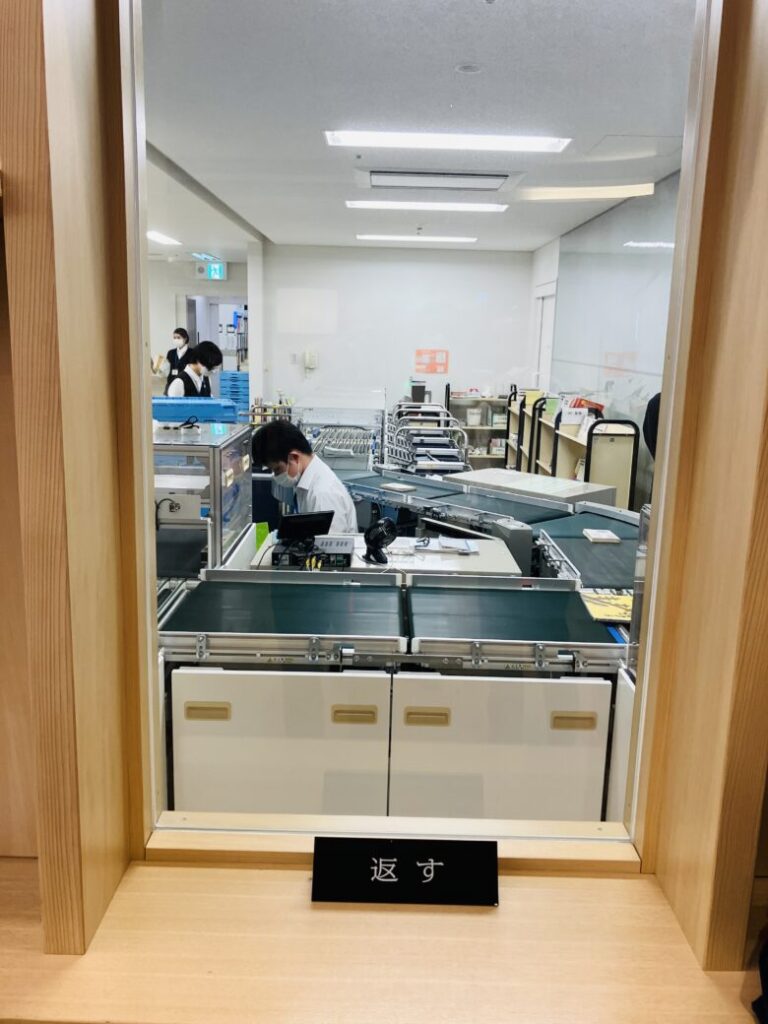
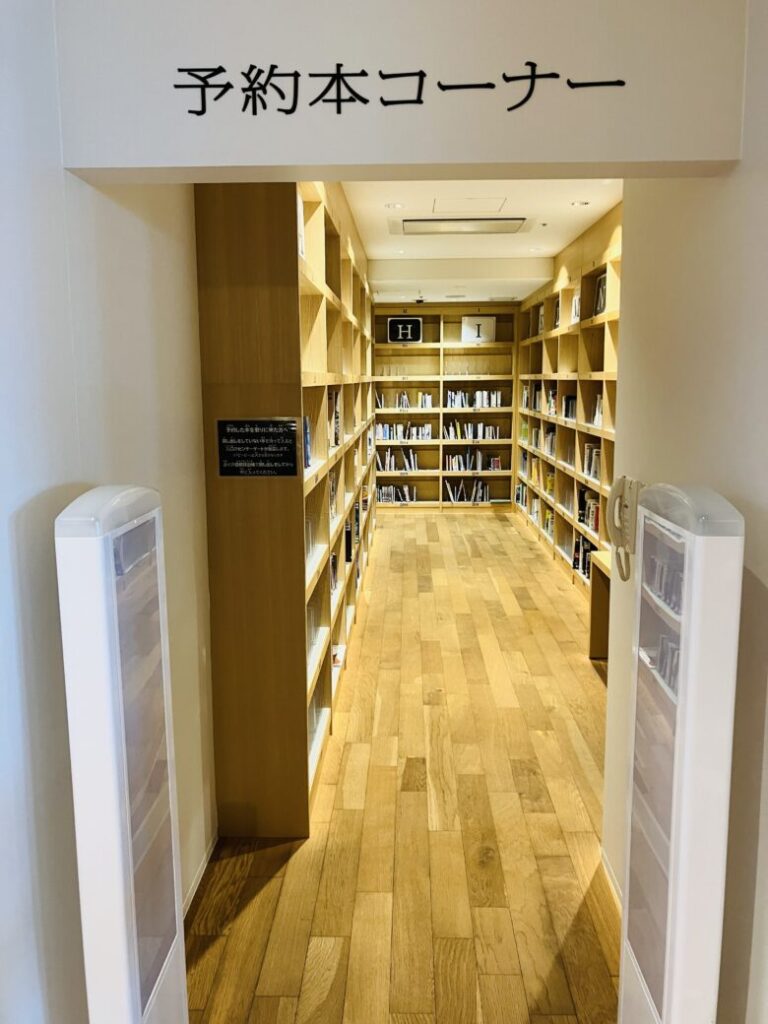
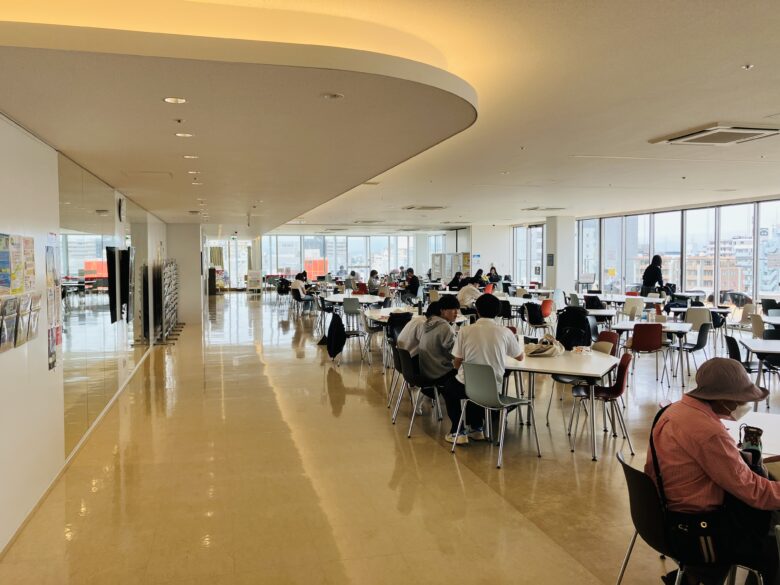
【English】
I conducted an inspection of the Yamato City Cultural Creation Center “Sirius” (located in Yamato City, Kanagawa Prefecture) to understand how the facility is operated to ensure that everyone can find a place for themselves.
Investigation Details
Name
Yamato City Cultural Creation Center “Sirius” (Yamato City, Kanagawa Prefecture)
Facility Overview
The “Sirius” facility in Yamato City, Kanagawa Prefecture, opened in November 2016, is a multifunctional complex that combines a library, an arts and culture hall, a lifelong learning center, and an indoor children’s plaza. The facility is operated under a designated management system, achieving a unified management structure despite its multifunctionality.
About the Municipality and Background
Yamato City boasts high railway convenience with three private railway companies operating eight stations within the city. Major roads, such as National Route 467, provide excellent transportation access. With a city area of 27 square kilometers and a population of approximately 243,000, Yamato City is experiencing population growth, particularly notable among those in their 20s. However, there are also 1,700 single-person households, highlighting the need for a facility that these individuals can easily visit regularly.
Forty-three years ago, a 1-kilometer section of the Sagami Railway’s Yamato Station (now Promenade) was moved underground to alleviate traffic congestion, and a road was constructed. Following this, redevelopment of the fourth district on the east side of Yamato Station began in 1990. However, development plans stalled after the bursting of the bubble economy and the Lehman Brothers collapse, leading Yamato City to acquire the 1.2-hectare land that had become vacant. This land was then used to consolidate aging facilities such as the library and lifelong learning center, leading to the construction of the cultural creation center “Sirius.”
Facility Features
Sirius is characterized by its operation, which considers the entire facility as a single library space where everyone can find a place for themselves. The mayor of Yamato City has referred to it as an “all-in-one library.” The six-story building includes a library, an arts and culture hall, a community center, an indoor children’s plaza, and a Starbucks coffee shop.
The operation of Sirius is managed by the designated manager “Yamato Mirai,” a group consisting of six companies: Library Distribution Center, Suntory Publicity Service, Shogakukan Shueisha Production, Aska, Bornelund, and Yokohama Building System. Each company specializes in the operation of the library, arts and culture hall, lifelong learning center, and indoor children’s plaza (which includes Genkikko Plaza, Chibikko Plaza, a nursery room with permanent staff, and a child-rearing consultation room), as well as the maintenance of the building.
Starbucks, located in a continuous space from the first-floor entrance, was selected by the designated manager Yamato Mirai and decided upon in consultation with the city. Starbucks rents space from the city for its operations. Additionally, separate from Sirius, spaces on the first and second floors that can be accessed from the outside include dining establishments, a convenience store, a dental clinic, and a pre-existing shrine, coexisting within the facility.
The charm of Sirius lies in its accessibility to all. Users are not bound by the detailed rules typical of public facilities, allowing for activities like drinking, chatting, and taking photographs within the facility, except in certain areas. This operational policy is based on the philosophy of reconsidering rules from the users’ perspective to provide a comfortable space.
Sirius, with six above-ground floors and one basement floor, boasts a site area of 9,378.19 square meters and a total floor area of 26,003.33 square meters. The city uses about 95% of the building, with the remaining space used by the shrine and commercial facilities. All library books have IC tags, and the creation of user cards is automated. Each floor has its unique characteristics, and the designated management group’s constituent organizations leverage their strengths in operations.
Operation and Budget
The operation of Sirius involves three divisions from two city departments, with frequent coordination meetings. Monthly, eight director meetings and liaison coordination meetings, as well as four subcommittee meetings, are held (see attached). While frequent liaison between the designated management group and the administration is conducted, issues with a budget of less than 1.3 million yen are handled by the designated management group, sometimes requiring budget adjustments, making it challenging to determine responsibility for certain matters.
The basic plan for Sirius was formulated between 2010 and 2011, with construction entrusted to the redevelopment association. Of the total construction cost of 16.2 billion yen, the city bore 14.7 billion yen. The design was handled by Sato General Design, and 90% of the operating budget is paid by the city as a designated management fee.
Sirius sees about 8,000 users daily, with an annual total of about 2.85 million users. Since its opening in 2016, the number of users has remained stable but began to decline slightly after a few years. As a result, the designated management group revised staff training content to enhance service awareness among users, creating a credo shared by all staff members (see attached). Some companies conduct daily recitations.
Sirius is supported not only by local residents but also by many visitors due to its multifunctionality and flexible operational policies. It is expected to continue developing as a facility that meets diverse needs.
Impressions
I felt that the Yamato City Cultural Creation Center “Sirius” is a facility that embodies the strengths of private sector operations. A good facility is not just about investing in high-functioning equipment but continuously innovating to keep it appealing and constantly updating by listening to users’ voices. Although the running costs are high, measures such as increasing the proportion of contract employees are taken to reduce personnel costs. At Sirius, operations are not bound by the detailed rules typical of public facilities, ensuring that everyone can find a place and feel comfortable. Similar operations would be challenging for direct administration.
Eight years have passed since its opening, but high-use and low-use areas within the facility are equally well-maintained. This is because one of the six companies in the designated management group specializes in building management, and frequent coordination meetings between the designated management group and the city contribute to reporting minor dirt and improving cleaning methods. Additionally, not only cleaning staff but all employees are committed to picking up litter, which greatly contributes to the facility’s cleanliness. All staff working at the facility seem to have a sense of service for “customers (citizens).” In typical facilities, floors with high usage tend to darken over time if cleaning is outsourced, but this is not seen at Sirius. Moreover, there is a suggestion box where citizens can post their requests, many of which have been reflected. This would be challenging to implement under direct city administration due to budget constraints.
The general manager of “Yamato Mirai,” who responded to our inspection, said they hardly feel any disadvantages of operating through a group of private companies. Many meetings are held monthly between the six companies of the designated management group and the administration to ensure smooth operations, all of which are viewed as necessary for the benefit of users (citizens). I was impressed by their high level of professionalism.
Through this inspection, I strongly felt the strengths and benefits of selecting a private company group as the designated management group. This results in a fusion of diverse perspectives and expertise, realizing optimal operations for users. The flexibility and quick responses enabled by private company groups, as opposed to public corporations or foundations established by the administration, were very impressive.
Basic Information on Yamato City, Kanagawa Prefecture
Population: 240,000 (estimated population as of April 1, 2024)
Area: 27 square kilometers
City Council: 28 members
FY 2024 budget (general account): 87.18 billion yen
Akita City
Population: 300,000
Area: 906 square kilometers
City Council: 36 members
FY 2023 total budget: 250.25 billion yen
(General account: 141.07 billion yen)
【Español】
Realicé una inspección en el Centro Cultural de Creación de la Ciudad de Yamato “Sirius” (ubicado en la Ciudad de Yamato, Prefectura de Kanagawa) para entender cómo se gestiona la instalación para asegurar que todos puedan encontrar un lugar para sí mismos.
Detalles de la Investigación
Nombre
Centro Cultural de Creación de la Ciudad de Yamato “Sirius” (Ciudad de Yamato, Prefectura de Kanagawa)
Resumen de la Instalación
La instalación “Sirius” en la Ciudad de Yamato, Prefectura de Kanagawa, que se inauguró en noviembre de 2016, es un complejo multifuncional que combina una biblioteca, un salón de arte y cultura, un centro de aprendizaje permanente y una plaza interior para niños. La instalación es operada bajo un sistema de gestión designada, logrando una estructura de gestión unificada a pesar de su multifuncionalidad.
Sobre el Municipio y el Contexto
La Ciudad de Yamato cuenta con una alta conveniencia ferroviaria con tres empresas ferroviarias privadas que operan ocho estaciones dentro de la ciudad. Las principales carreteras, como la Ruta Nacional 467, proporcionan un excelente acceso de transporte. Con una superficie de 27 kilómetros cuadrados y una población de aproximadamente 243,000 habitantes, la Ciudad de Yamato está experimentando un crecimiento poblacional, especialmente notable entre los jóvenes de 20 años. Sin embargo, también hay 1,700 hogares unipersonales, lo que resalta la necesidad de una instalación que estas personas puedan visitar regularmente con facilidad.
Hace 43 años, una sección de 1 kilómetro de la Estación Yamato del Ferrocarril Sagami (ahora Promenade) se trasladó al subsuelo para aliviar la congestión del tráfico, y se construyó una carretera. Posteriormente, se inició la reurbanización del cuarto distrito en el lado este de la Estación Yamato en 1990. Sin embargo, los planes de desarrollo se estancaron tras el estallido de la burbuja económica y la crisis de Lehman Brothers, lo que llevó a la Ciudad de Yamato a adquirir el terreno de 1.2 hectáreas que había quedado vacío. Este terreno se utilizó para consolidar instalaciones antiguas como la biblioteca y el centro de aprendizaje permanente, llevando a la construcción del centro de creación cultural “Sirius.”
Características de la Instalación
Sirius se caracteriza por su operación, que considera toda la instalación como un único espacio de biblioteca donde todos pueden encontrar un lugar para sí mismos. El alcalde de la Ciudad de Yamato se ha referido a ella como una “biblioteca integral.” El edificio de seis pisos incluye una biblioteca, un salón de arte y cultura, un centro comunitario, una plaza interior para niños y una cafetería Starbucks.
La operación de Sirius está gestionada por el administrador designado “Yamato Mirai,” un grupo compuesto por seis empresas: Library Distribution Center, Suntory Publicity Service, Shogakukan Shueisha Production, Aska, Bornelund y Yokohama Building System. Cada empresa se especializa en la operación de la biblioteca, el salón de arte y cultura, el centro de aprendizaje permanente y la plaza interior para niños (que incluye la Plaza Genkikko, la Plaza Chibikko, una sala de guardería con personal permanente y una sala de consultas sobre crianza), así como el mantenimiento del edificio.
Starbucks, ubicada en un espacio continuo desde la entrada del primer piso, fue seleccionada por el administrador designado Yamato Mirai y decidida en consulta con la ciudad. Starbucks alquila el espacio a la ciudad para sus operaciones. Además, separado de Sirius, los espacios en los primeros y segundos pisos que se pueden acceder desde el exterior incluyen establecimientos de comida, una tienda de conveniencia, una clínica dental y un santuario preexistente, coexistiendo dentro de la instalación.
El encanto de Sirius reside en su accesibilidad para todos. Los usuarios no están limitados por las detalladas normas típicas de las instalaciones públicas, permitiendo actividades como beber, conversar y tomar fotografías dentro de la instalación, excepto en ciertas áreas. Esta política operativa se basa en la filosofía de reconsiderar las reglas desde la perspectiva de los usuarios para proporcionar un espacio cómodo.
Sirius, con seis pisos sobre el suelo y un sótano, cuenta con un área de terreno de 9,378.19 metros cuadrados y un área total de construcción de 26,003.33 metros cuadrados. La ciudad utiliza aproximadamente el 95% del edificio, con el espacio restante utilizado por el santuario y las instalaciones comerciales. Todos los libros de la biblioteca tienen etiquetas IC, y la creación de tarjetas de usuario está automatizada. Cada piso tiene sus características únicas, y las organizaciones constitutivas del grupo de gestión designado aprovechan sus fortalezas en las operaciones.
Operación y Presupuesto
La operación de Sirius involucra a tres divisiones de dos departamentos de la ciudad, con frecuentes reuniones de coordinación. Mensualmente, se celebran ocho reuniones de directores y reuniones de coordinación de enlace, así como cuatro subcomités (ver anexo). Si bien se realiza una frecuente coordinación entre el grupo de gestión designada y la administración, los asuntos con un presupuesto inferior a 1.3 millones de yenes son manejados por el grupo de gestión designada, a veces requiriendo ajustes presupuestarios, lo que hace que sea difícil determinar la responsabilidad en ciertos asuntos.
El plan básico para Sirius se formuló entre 2010 y 2011, con la construcción encargada a la asociación de reurbanización. Del costo total de construcción de 16.2 mil millones de yenes, la ciudad asumió 14.7 mil millones de yenes. El diseño fue realizado por Sato General Design, y el 90% del presupuesto operativo se paga como tarifa de gestión designada.
Sirius recibe aproximadamente 8,000 usuarios diarios, con un total anual de alrededor de 2.85 millones de usuarios. Desde su apertura en 2016, el número de usuarios se ha mantenido estable, pero comenzó a disminuir ligeramente después de unos años. Como resultado, el grupo de gestión designada revisó el contenido de la capacitación del personal para mejorar la conciencia del servicio entre los usuarios, creando un credo compartido por todos los empleados (ver anexo). Algunas empresas realizan recitaciones diarias.
Sirius es apoyada no solo por los residentes locales, sino también por muchos visitantes debido a su multifuncionalidad y políticas operativas flexibles. Se espera que continúe desarrollándose como una instalación que satisface diversas necesidades.
Impresiones
Sentí que el Centro Cultural de Creación de la Ciudad de Yamato “Sirius” es una instalación que encarna las fortalezas de las operaciones del sector privado. Una buena instalación no solo consiste en invertir en equipos de alta funcionalidad, sino en innovar continuamente para mantenerla atractiva y actualizarse constantemente escuchando las voces de los usuarios. Aunque los costos operativos son altos, se toman medidas como aumentar la proporción de empleados contratados para reducir los costos de personal. En Sirius, las operaciones no están limitadas por las detalladas reglas típicas de las instalaciones públicas, asegurando que todos puedan encontrar un lugar y sentirse cómodos. Operaciones similares serían difíciles para la administración directa.
Han pasado ocho años desde su apertura, pero las áreas de alto y bajo uso dentro de la instalación están igualmente bien mantenidas. Esto se debe a que una de las seis empresas del grupo de gestión designada se especializa en gestión de edificios, y las frecuentes reuniones de coordinación entre el grupo de gestión designada y la ciudad contribuyen a reportar suciedad menor y mejorar los métodos de limpieza. Además, no solo el personal de limpieza, sino todos los empleados están comprometidos a recoger basura, lo que contribuye en gran medida a la limpieza de la instalación. Todo el personal que trabaja en la instalación parece tener un sentido de servicio para los “clientes (ciudadanos).” En instalaciones típicas, los pisos con alto uso tienden a oscurecerse con el tiempo si la limpieza se subcontrata, pero esto no se ve en Sirius. Además, hay un buzón de sugerencias donde los ciudadanos pueden publicar sus solicitudes, muchas de las cuales han sido reflejadas. Esto sería difícil de implementar bajo la administración directa de la ciudad debido a las restricciones presupuestarias.
El gerente general de “Yamato Mirai,” quien respondió a nuestra inspección, dijo que casi no siente desventajas en operar a través de un grupo de empresas privadas. Se celebran muchas reuniones mensuales entre las seis empresas del grupo de gestión designada y la administración para garantizar operaciones sin problemas, todas consideradas necesarias para el beneficio de los usuarios (ciudadanos). Me impresionó su alto nivel de profesionalismo.
A través de esta inspección, sentí fuertemente las fortalezas y beneficios de seleccionar un grupo de empresas privadas como grupo de gestión designada. Esto resulta en una fusión de diversas perspectivas y conocimientos especializados, logrando operaciones óptimas para los usuarios. La flexibilidad y las respuestas rápidas habilitadas por los grupos de empresas privadas, a diferencia de las corporaciones públicas o fundaciones establecidas por la administración, fueron muy impresionantes.
Información Básica sobre la Ciudad de Yamato, Prefectura de Kanagawa
Población: 240,000 (población estimada al 1 de abril de 2024)
Área: 27 kilómetros cuadrados
Concejo Municipal: 28 miembros
Presupuesto del año fiscal 2024 (cuenta general): 87.18 mil millones de yenes
Ciudad de Akita
Población: 300,000
Área: 906 kilómetros cuadrados
Concejo Municipal: 36 miembros
Presupuesto total del año fiscal

